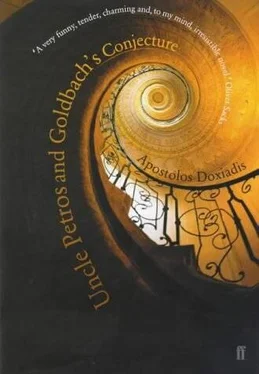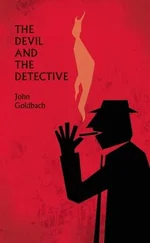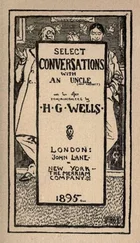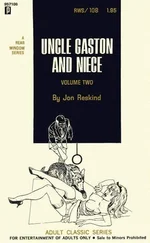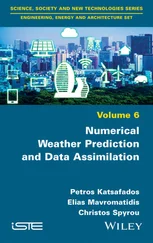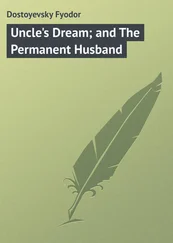'You must realize,’ the latter told him, 'that you're running a huge risk. If you don't manage to ride this approach to the end, you'll be left with precious little to show for it. Intermediate divisibility results, although quite charming, are not of much interest any more. Unless you can convince people that they can be useful in proving important theorems, like the Conjecture, they are not of themselves worth much.'
Petros was, as always, well aware of the risks he was taking.
'Still, something tells me you may well be on a good course,’ Littlewood encouraged him.
'Yes,' grumbled Hardy, 'but please do hurry up, Papachristos, before your mind begins to rot, the way mine's doing. Remember, at your age Ramanujan was already five years dead!'
This first presentation had taken place early in the Michaelmas term, yellow leaves falling outside the Gothic windows. During the winter months that followed, my uncle's work advanced more than it ever had. It was at this time that he also started using the method he called 'geometric'.
He began by representing all composite (i.e. non-prime) numbers by placing dots in a parallelogram, with the lowest prime divisor as width and the quotient of the number by it as height. For example, 15 is represented by 3 x 5 rows, 25 by 5 x 5,35 by 5 x 7 rows:
By this method, all even numbers are represented as double columns, as 2 x 2,2 x 3,2 x 4,2 x 5, etc. The primes, on the contrary, since they have no integer divisors, are represented as single rows, for example 5,7,11
Petros extended the insights from this elementary geometric analogy to arrive at number-theoretical conclusions.
After Christmas, he presented his first results. Since, however, instead of using pen and paper, he laid out his patterns on the floor of Hardy's study using beans, his new approach earned from Littlewood a teasing accolade. Although the younger man conceded that he found 'the famous Papachristos bean method' conceivably of some usefulness, Hardy was by now ourright annoyed.
'Beans indeed!' he said. 'There is a world of difference between elementary and infantile… Don't you forget it, Papachristos, this blasted Conjecture is difficult – if it weren't, Goldbach would have proved it himself!'
Petros, however, had faith in his intuition and attributed Hardy's reaction to the 'intellectual constipation brought about by age' (his words).
'The great truths in life are simple,' he told Littlewood later, when the two of them were having tea in his rooms. Littlewood countered him, mentioning the extremely complex proof of the Prime Number Theorem by Hadamard and de la Vallee-Poussin.
Then he made a proposal: 'What would you say to doing some real mathematics, old chap? I've been working for some time now on Hilbert's Tenth Problem, the solvability of Diophantine equations. I have this idea that I want to test, but I'm afraid I need help with the algebra. Do you think you could lend me a hand?'
Littlewood would have to seek his algebraic help elsewhere, however. Although his colleague's confidence in him was a boost to Petros' pride, he flatly declined. He was too exclusively involved with the Conjecture, he said, too deeply engrossed in it, to be able fruitfully to concern himself with anything eise.
His faith, backed by a stubborn intuition, in the 'infantile' (according to Hardy) geometric approach, was such that for the first time since he began work on the Conjecture, Petros now often had the feeling that he was almost a hair's breadth away from the proof. There were actually even a few exhilarating minutes, late on a sunny January afternoon, when he had the shortli ved illusion that he had succeeded – but, alas, a more sober examination located a small, but crucial mistake.
(I have to confess it, dear reader: at this point in my uncle's narrative I felt despite myself a quiver of vengeful joy. I remembered that summer in Pylos, a few years back, when I too had thought for a while I'd discovered the proof of Goldbach's Conjecture – although I did not then know it by name.)
His great optimism notwithstanding, Petros' occasional bouts of self-doubt, sometimes verging on despair (especially after Hardy's put-down of the geometric method), now became stronger than ever. Still, they could not curb his spirit. He fought them away by branding them the inevitable anguish preceding a great triumph, the onset of the labour pains leading into the delivery of the majestic discovery. After all, the night is darkest before dawn. He was, Petros felt certain, all but ready to run the final dash. One last concentrated burst of effort was all that was needed to award him the last brilliant insight.
Then, there would come the glorious finish
The heralding of Petros Papachristos' surrender, the termination of his efforts to prove Goldbach's Conjecture, came in a dream he had in Cambridge, sometime after Christmas – a portent whose full significance he did not at first fathom.
Like many mathematicians working for long periods with basic arithmetical problems, Petros had acquired the quality that has been called 'friendship with the integers', an extended knowledge of the idiosyncrasy, quirks and peculiarities of thousands of specific whole numbers. A few examples: a 'friend of the integers' will immediately recognize 199 or 457 or 1009 as primes. 220 he will automatically associate with 284 since they are linked by an unusual relationship (the sum of the integer divisors of each one is equal to the other). 256 he reads naturally as 2 to the eighth power, which he well knows to be followed by a number with great historical interest, since 257 can be expressed as 2^2^3+1, and a famous hypothesis held that all numbers of the form 2^2^n + 1 were prime. [11]
The first man my uncle had met who had this quality (and to the utmost degree) was Srinivasa Ramanujan. Petros had seen it demonstrated on many opportunities, and to me he recounted this anecdote:+ [+ Hardy also recounts the incident in his Mathematician's Apology without, however, acknowledging my uncle's presence.]
One day in 1918, he and Hardy were visiting him in the Sanatorium where he lay ill. To break the ice, Hardy mentioned that the taxi that had brought them had had the registration number 1729, which he personally found 'rather boring'. But Ramanujan, after pondering this for only a moment, disagreed vehemently: 'No, no, Hardy! It's a particularly interesting number – in fact, it's the smallest integer that can be expressed as the sum of two cubes in two different ways!" [12]
During the years that Petros worked on the Conjecture with the elementary approach, his own friendship with the integers developed to an extraordinary degree. Numbers ceased after a while being inanimate entities; they became to him almost alive, each with a distinct personality. In fact, together with the certainty that the solution existed somewhere out there, it added to his resolve to persevere during the most difficult of times: working with the integers, he felt, to quote him directly, 'constantly among friends'.
This familiarity caused an influx of specific numbers into his dreams. Out of the nameless, nondescript mass of integers that up until then crowded their nightly dramas, individual actors now began to emerge, even occasional protagonists. 65, for example, appeared for some reason as a City gentleman, with bowler hat and rolled umbrella, in constant companionship with one of his prime divisors, 13, a goblin-like creature, supple and lightning-quick. 333 was a fat slob, stealing bites of food from the mouths of its siblings 222 and 111, and 8191, a number known as a 'Mersenne Prime', invariably wore the attire of a French gamin, complete down to the Gauloise cigarette hanging from his lips.
Some of the visions were amusing and pleasant, others indifferent, still others repetitious and annoying. There was one category of arithmetical dream, however, which could only be called nightmarish, if not for horror or agony then for its profound, bottomless sadness. Particular even numbers would appear, personified as pairs of identical twins. (Remember that an even number is always of the form 2k, the sum of two equal integers). The twins would gaze on him fixedly, immobile and expressionless. But there was great, if mute, anguish in their eyes, the anguish of desperation. If they could have spoken, their words would have been: 'Come! Please. Hurry! Set us free!'
Читать дальше
